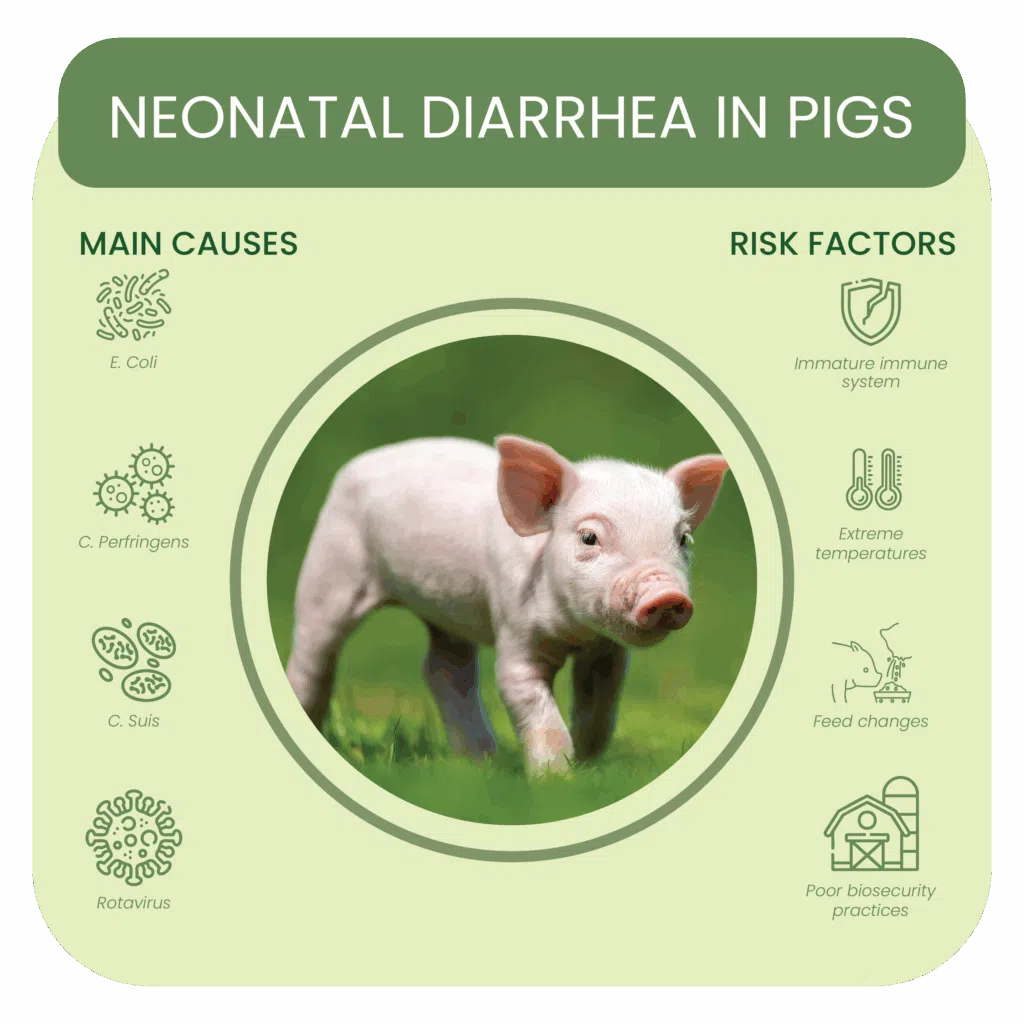Quillaja saponaria saponins: A new tool to strengthen health programs
Neonatal diarrhea remains one of the most significant health challenges in swine production, with an incidence that can reach 15 to 25% of piglets during the first weeks of life¹. These enteric infections, together with husbandry conditions that compromise gut health, result in estimated losses of USD 15 to 25 per affected animal² due to mortality, reduced growth, and increased management and treatment costs²,³.
Understanding the Multifactorial Nature of Neonatal Diarrhea
The causes are multifactorial and include pathogens that directly damage intestinal integrity and function, thereby impairing nutrient absorption and triggering diarrheic syndromes. Among the most relevant are Escherichia coli and Clostridium perfringens, which produce toxins that injure the intestinal mucosa, induce excessive fluid secretion, and alter nutrient absorption²; Cystoisospora suis, a protozoan that destroys epithelial cells in the small intestine, disrupting digestion and predisposing to secondary infections³; and rotavirus, which damages intestinal villi, reduces absorptive surface area, and promotes dehydration².
Management and environmental factors such as poor hygiene, extreme temperatures, and dietary changes also contribute directly to the development of diarrhea and increase its incidence by creating stress at a developmental stage when the immune system is still immature, increasing piglets’ susceptibility to infection².

From Traditional Tools to Integrated Health
Historically, control strategies have included antibiotic growth promoters (AGPs), zinc oxide, and anticoccidials⁴. While effective, prolonged use is associated with antimicrobial resistance, environmental impacts, and increasing regulatory restrictions across markets⁴.
In response, alternatives such as prebiotics, probiotics, organic acids, vaccines, and phytogenic additives have been incorporated. These tools offer different mechanisms to help control pathogens, modulate the microbiota, or reinforce immune responses⁴. Although most do not replace traditional tools on their own, they can be integrated into combined programs to provide additional benefits and reduce reliance on conventional strategies.
An integrated approach to controlling neonatal diarrhea is essential and begins with robust biosecurity to limit pathogen introduction and spread. Building on that foundation, combining traditional tools with complementary strategies can reduce the externalities of prolonged treatments, sustain efficacy, and support the long-term viability of production systems.
Quillaja saponaria Saponins as a Strategic Solution
Triterpenic saponins, phytogenic compounds obtained from the Quillaja saponaria tree, offer dual, relevant activity for controlling neonatal diarrhea. On the one hand, they modulate both innate and adaptive immunity, stimulating key cells such as macrophages and lymphocytes to favor faster responses to pathogens and enhanced antibody production⁵,⁶. On the other, they exhibit antimicrobial and antiprotozoal effects through interactions with microbial cell membranes, notably through disruption of the lipopolysaccharide barrier, compromising the integrity and viability of bacteria and protozoa without damaging host cells⁵,⁷.
Representation of lipopolysaccharide membrane disruption by triterpenic saponins.
Their versatility allows inclusion in health programs either as a stand-alone measure or in combination with other strategies, helping not only to prevent diseases but also to control pathogens. In vivo trials conducted by Plantae Labs, in research centers and commercial farms, using standardized Quillaja saponaria extract, have shown that saponins:
- Achieve similar effectiveness to conventional treatments such as toltrazuril for controlling Cystoisospora suis.
- Act synergistically with commercial products like organic acids and probiotics, surpassing outcomes achieved by conventional treatments alone.
- Provide efficacy comparable to zinc oxide for controlling post-weaning diarrhea caused by E. coli.
- Effectively reduce challenges associated with Clostridium perfringens and related coinfections, particularly during periods of temperature and transport stress.
These findings support their role as an alternative that can be effectively integrated into health programs, offering improved profitability relative to other options with positive returns for producers, while contributing to the economic and sanitary sustainability of swine production.
References
- Smith, A. L., & Jones, P. R. (2019). Prevalence and economic impact of neonatal diarrhea in swine. Journal of Swine Health and Production, 27(4), 189–197.
- Svensmark, B., Jorsal, S. E., & Nielsen, N. C. (1989). Epidemiological studies of piglet diarrhoea in intensively managed Danish sow herds. Acta Veterinaria Scandinavica, 30(1), 55–62.
- Mundt, H. C., Cohnen, A., Daugschies, A., Joachim, A., Prosl, H., Schmäschke, R., & Westphal, B. (2005). Epidemiology and control of Cystoisospora suis in swine: A European perspective. Parasitology Research, 97(Suppl 1), S84–S86.
- Fairbrother, J. M., Nadeau, É., & Gyles, C. L. (2005). Escherichia coli in postweaning diarrhea in pigs: An update on bacterial types, pathogenesis, and prevention strategies. Animal Health Research Reviews, 6(1), 17–39.
- Matsuura, H., & Yoshikawa, T. T. (1985). Stimulating macrophage activity in mice and humans by oral administration of Quillaja saponin. Infection and Immunity, 47(2), 379–383.
- Kensil, C. R., Patel, U., Lennick, M., & Marciani, D. (1991). Separation and characterization of saponins with adjuvant activity from Quillaja saponaria Molina cortex. Journal of Immunology, 146(2), 431–437.
Sparg, S. G., Light, M. E., & van Staden, J. (2004). Biological activities and distribution of plant saponins. Journal of Ethnopharmacology, 94(2–3), 219–243.



